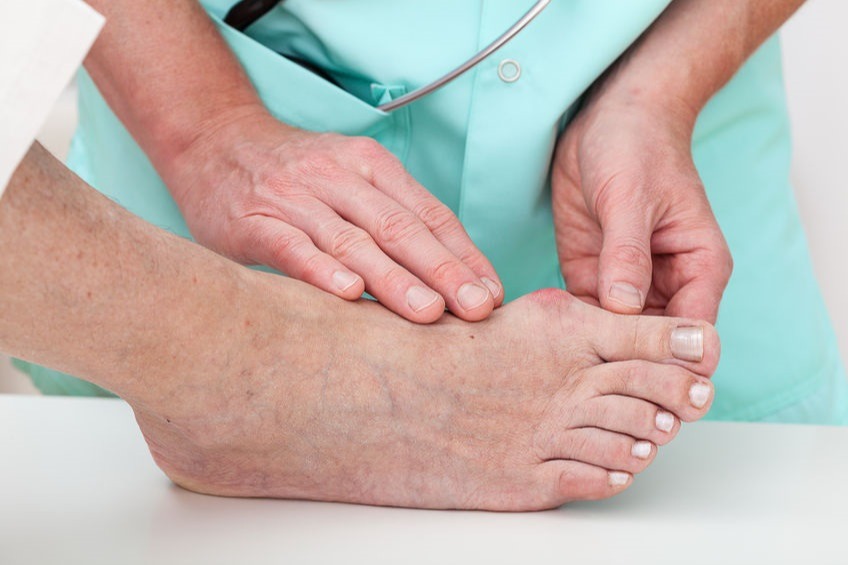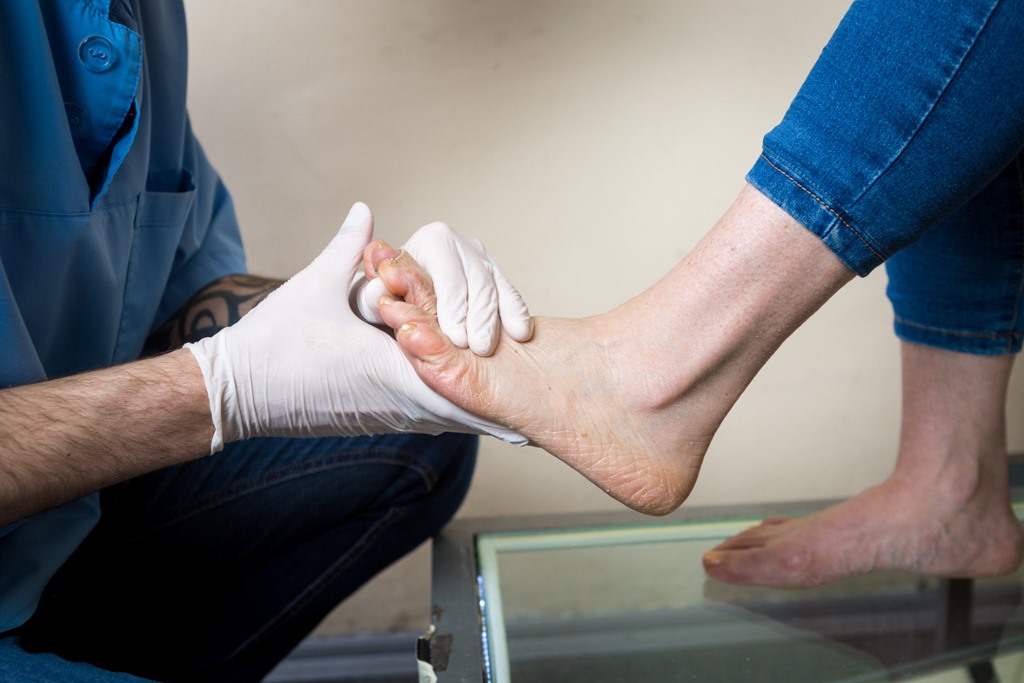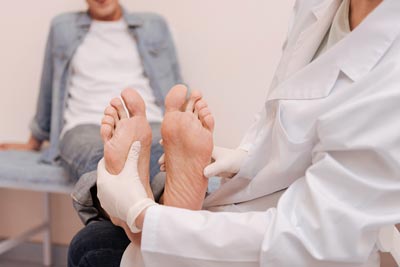Bunion Surgery: What to Expect Before, During, and After the Procedure
Bunions, those persistent, painful bumps at the base of your big toe, are not just a cosmetic concern but can significantly impact your quality of life. From choosing footwear to simply walking around, bunions affect daily activities big and small. If you’re considering bunion surgery, it’s natural to have a sea of questions about the process. Whether it’s apprehension about the surgery itself or curiosity about the recovery period, understanding what lies ahead can significantly ease your mind. In this comprehensive guide, we’ll walk you through everything you need to know about bunion surgery – from the initial consultation with your surgeon to the moment you’re back on your feet, enjoying your favorite activities once again, free from pain. Get ready to step into a new phase of comfort and mobility!
Understanding Bunions and the Need for Surgery
Bunions, medically termed “Hallux Valgus,” occur as a bony protrusion at the joint where the big toe meets the first bone of the foot, known as the metatarsal. This deformity arises not merely from a bone being out of place but from a complex change in the structural anatomy of the foot. Common causes include genetic predispositions, unsuitable footwear, and certain rheumatic conditions, among others. Not everyone with bunions experiences discomfort, but for those who do, the pain and inflammation can severely limit daily activities and overall quality of life. Surgery becomes a viable option when non-surgical treatments, like footwear modification, orthotics, and pain management, no longer provide relief. The goal of bunion surgery is not only to correct the deformity but also to alleviate discomfort and restore functionality, enabling patients to engage in their day-to-day activities without pain.

Bunion Treatment
Preparing for Bunion Surgery
Preparing for bunion surgery is a key step in ensuring a successful outcome and a smooth recovery. Prior to the surgery, you will meet with your surgeon to discuss the specifics of the procedure, review your medical history, and perform any necessary pre-operative tests. It’s crucial to communicate openly with your surgeon about your expectations, any medical conditions you have, and medications you’re taking, as these factors can all influence the surgical approach and recovery process.
In preparation for surgery, you may be advised to stop taking certain medications that can increase bleeding risk, such as aspirin or other blood thinners, several days before the procedure. You will also need to arrange for transportation home after the surgery, as you won’t be able to drive yourself. Preparing your home in advance for your return is equally important; consider setting up a recovery area with easy access to essentials and ensuring you have a support system in place to assist with tasks that may be challenging post-surgery.
Lastly, your surgeon may recommend starting foot exercises or physical therapy before the surgery to enhance your recovery process. Adhering to these pre-surgery instructions is vital for minimizing complications and maximizing the effectiveness of your recovery.
Types of Bunion Surgery
The decision on which type of bunion surgery to undergo depends on several factors, including the severity of the bunion, the patient’s overall health, and the desired outcome. Here are some of the most common types of bunion surgeries:
- Osteotomy: This procedure involves cutting and realigning the metatarsal bone to correct the deformity. Small screws, pins, or plates may be used to secure the bone in its new position.
- Exostectomy: Sometimes performed in conjunction with an osteotomy, an exostectomy involves removing the bony bump from the side of the big toe joint without realigning the bone. This procedure is generally recommended for patients with less severe deformities.
- Arthrodesis: Suitable for patients with severe bunions or arthritis diseases, arthrodesis involves fusing the bones at the affected joint. The damaged joint surfaces are removed, and screws, plates, or rods are used to hold the bones together until they heal into a single, stable unit.
- Resection Arthroplasty: In this procedure, a portion of the joint is removed to create a flexible “scar” joint. Resection arthroplasty is typically reserved for older patients, those who have had unsuccessful previous bunion surgery, or those with severe arthritis.
- Minimally Invasive Surgery: For suitable candidates, minimally invasive surgery can be performed through small incisions. This approach may lead to less post-operative pain and a quicker recovery, but it’s not suitable for all patients.

Bunion Treatment Service
The Day of the Surgery
The day of your bunion surgery is a pivotal moment in your journey towards pain-free walking. On this day, it’s crucial to follow all the guidelines provided by your surgical team to ensure everything goes smoothly. Upon arrival at the hospital or surgical center, you’ll be registered and taken to the pre-operative area where the surgical team will prepare you for surgery. This typically involves changing into a hospital gown, and the administration of pre-operative medications might be necessary. An anesthesiologist will discuss the type of anesthesia you’ll receive, which could be local, regional, or general, depending on the specific procedure and your individual needs.
Once you’re in the operating room, the surgical team will carry out the procedure, which usually lasts between one and two hours, again, depending on the complexity of your bunion and the type of surgery being performed. After the surgery, you’ll be moved to a recovery area where nurses will monitor your vitals and ensure you’re comfortable as the anesthesia wears off. You might feel groggy or disoriented initially, but this is normal. The level of post-operative pain varies among patients, but you’ll be provided with pain relief mechanisms to manage discomfort.
It’s also possible that your foot will be immobilized in a bandage, cast, or special surgical boot, to maintain proper alignment and protection of the foot as it begins to heal. Before being discharged, you’ll be given specific aftercare instructions regarding wound care, pain management, and any prescribed physical therapy exercises. It’s imperative to arrange for someone to drive you home and stay with you for at least the first night, as you begin your recovery at home.
What Happens During Bunion Surgery
Bunion surgery, although varying slightly depending on the specific procedure being performed, usually follows a general set of steps. Initially, the foot is cleaned and prepped to maintain a sterile environment, minimizing the risk of infection. Anesthesia is administered based on the patient’s needs and the complexity of the surgery. Simple surgeries may only require local anesthesia (numbing the foot), while more complex procedures might necessitate regional anesthesia (numbing below the knee) or even general anesthesia (where the patient is asleep).
The surgeon then makes an incision in the skin over the bunion, carefully exposing the bone and joint. Depending on the type of surgery, the bone may be cut, realigned, and fixed in place with screws, plates, or pins (osteotomy), or part of the bone may be removed (exostectomy or resection arthroplasty). In cases of severe deformity or arthritis, the joint might be fused (arthrodesis). Throughout the procedure, the surgeon ensures that the bones are properly aligned to correct the bunion and restore the foot’s natural function.
Once the necessary adjustments have been made, the surgical site is closed with stitches, and the foot is usually wrapped in a sterile bandage, cast, or placed in a surgical boot to protect it and maintain proper alignment during the healing process. The goal of these procedures is not only to remove the bunion but also to correct the underlying cause of the deformity, thereby reducing the risk of recurrence and providing long-lasting relief.

Bunion Pain Relief
Post-Surgery: The Immediate Aftermath
After bunion surgery, the immediate post-operative period is critical for determining the success of your healing process. Patients can expect the first few days following the procedure to involve a significant amount of rest with limited mobility. It’s paramount to keep the operated foot elevated as much as possible to reduce swelling and improve blood circulation, which aids in the healing process. Ice packs may also be recommended to manage swelling, but they should be used as directed by your surgeon to avoid compromising the surgical site.
Bunion pain management is another crucial aspect of the immediate aftermath. Patients will likely experience some level of discomfort, which can usually be controlled with prescribed pain medications or over-the-counter options, as advised by your healthcare provider. It’s essential to follow the medication schedule precisely to ensure continuous pain relief during the initial recovery phase.
Monitoring the surgical site for signs of infection, such as increased redness, swelling, or discharge, is vital. Any unusual symptoms should be reported to your surgeon immediately to prevent complications. Additionally, you will be given specific instructions on how to care for your surgical site, including guidelines on keeping it dry and clean during the first few days after surgery.
Adhering to these post-surgery recommendations is fundamental to a smooth recovery and achieving the best possible outcome from your bunion surgery. Compliance with these guidelines, combined with regular follow-up appointments with your surgeon, will pave the way for a successful recovery and a return to normal activities.
Bunion surgery marks the beginning of a journey toward regaining comfort and functionality in your foot, addressing the discomfort and limitations brought on by bunions. The process—from preparation for surgery to the operation itself, followed by a carefully guided recovery phase—is designed to provide the most favorable outcomes for patients. Adhering to pre-operative and post-operative instructions, maintaining open communication with your foot healthcare provider, and committing to the recommended rehabilitation exercises are all crucial steps that contribute to a successful recovery. Remember, the goal of bunion surgery is not only to correct the physical deformity but also to enhance your quality of life, allowing you to return to your daily activities without pain. With patience, diligence, and the support of your surgical team, you can achieve lasting relief from bunion-related discomfort and a significant improvement in foot function.
Flagstaff Foot Doctors: Anthony Rosales DPM
https://www.google.com/maps?cid=8835841318590452161
421 N Humphreys St, Flagstaff, AZ 86001, United States
(928) 774-4825
https://flagstafffootandankle.com/
